The Workplace Productivity Challenge - Summary - Department of ...
The Workplace Productivity Challenge - Summary - Department of ...
The Workplace Productivity Challenge - Summary - Department of ...
You also want an ePaper? Increase the reach of your titles
YUMPU automatically turns print PDFs into web optimized ePapers that Google loves.
16<br />
summary <strong>of</strong> the report <strong>of</strong> the workplace productivity working group<br />
Figure 5: Contributions to New Zealand’s Labour <strong>Productivity</strong> Growth<br />
Source: Black, M, Melody, G and McLellan, N (2003), “<strong>Productivity</strong> in New Zealand 1988 to 2002”, New Zealand Economic Papers 37(1): 119-150,<br />
Statistics New Zealand.<br />
2.00%<br />
6- year average annual growth rate<br />
1.50%<br />
1.00%<br />
0.50%<br />
0.00%<br />
-0.50%<br />
-1.00%<br />
LABOUR PRODUCTIVITY<br />
MULTIFACTOR PRODUCTIVITY<br />
CAPITAL-TO-LABOUR RATIO<br />
-1.50%<br />
1987-1992<br />
1988-1993<br />
1989-1994<br />
1990-1995<br />
1991-1996<br />
1992-1997<br />
1993-1998<br />
1994-1999<br />
1995-2000<br />
1996-2001<br />
1997-2002<br />
Improvements in workplace productivity can contribute to labour productivity, notably MFP, and<br />
therefore to economic growth and New Zealand’s living standards.<br />
OECD research suggests that productivity gains within existing firms account for 50%-80% <strong>of</strong> labour<br />
productivity growth in most OECD countries. <strong>The</strong> entry and exit <strong>of</strong> firms account for most <strong>of</strong> the rest<br />
<strong>of</strong> labour productivity growth, although the contribution <strong>of</strong> the expansion and contraction <strong>of</strong> existing<br />
firms should not be overlooked.<br />
New Zealand faces a continuing challenge in improving living standards for all. For New Zealand to<br />
move back up the OECD rankings, per capita GDP growth would need to exceed the growth rate <strong>of</strong><br />
richer economies in the OECD by a significant margin. For example, it would need to exceed the UK’s<br />
per capita GDP growth by 1.9% per year over the next 10 years to rise above the UK’s per capita GDP.<br />
4.2<br />
<strong>Workplace</strong> <strong>Productivity</strong> Drivers<br />
Firms face strong incentives to invest in productivity-enhancing activities that will increase their<br />
returns. <strong>The</strong> productivity <strong>of</strong> the firm reflects how it brings together people, skills, technology, capital<br />
and other inputs to increase its pr<strong>of</strong>itability and market share. Continuous innovation and improvement<br />
in all aspects <strong>of</strong> the firm’s management and operations are key components <strong>of</strong> lifting productivity.<br />
<strong>The</strong> main ways that firms can increase their productivity are through investing in capital, achieving<br />
economies <strong>of</strong> scale, investing in innovation and technology, and adopting better business practices.<br />
Capital investment in physical resources such as machinery and technology complements labour,<br />
enabling workers to be more productive. Investment in new technology that embodies the latest<br />
innovations can boost productivity further, as can complementary investments, such as training<br />
workers and improving the organisation <strong>of</strong> work.<br />
Economies <strong>of</strong> scale improve productivity as the firm engages in mass production. As the firm produces<br />
more and more goods, average cost begins to fall because <strong>of</strong> economies in production, such as using<br />
expensive machinery more intensively.<br />
Adopting better practices across the range <strong>of</strong> business procedures can also lift productivity<br />
directly through improvements in efficiency, for example in production processes, but also through



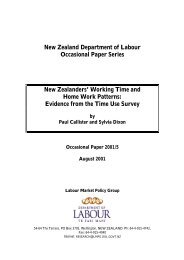

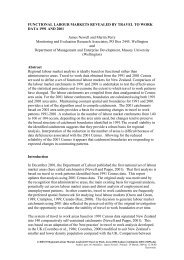
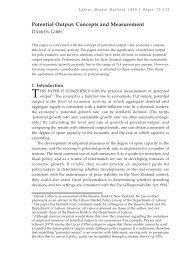

![a note on levels, trends, and some implications [pdf 21 pages, 139KB]](https://img.yumpu.com/27285836/1/184x260/a-note-on-levels-trends-and-some-implications-pdf-21-pages-139kb.jpg?quality=85)


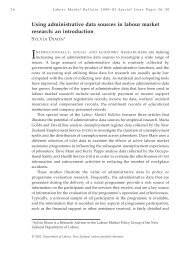


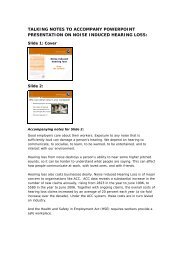
![Labour Market Trends and Outlook - 1996 [pdf 18 pages, 94KB]](https://img.yumpu.com/27285764/1/184x260/labour-market-trends-and-outlook-1996-pdf-18-pages-94kb.jpg?quality=85)
